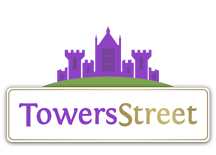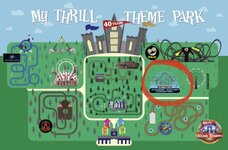- News all the latest
- Theme Park explore the park
- Resort tour the resort
- Future looking forward
- History looking back
- Community and meetups
-
ℹ️ Heads up...
This is a popular topic that is fast moving Guest - before posting, please ensure that you check out the first post in the topic for a quick reminder of guidelines, and importantly a summary of the known facts and information so far. Thanks. - Thread starter Matt N
- Start date
- Status
- This topic has been locked. No further replies can be posted.
- Favourite Ride
- The Smiler
- Favourite Ride
- Nemesis Original
- Favourite Ride
- The Giant Squid
- Status
- This topic has been locked. No further replies can be posted.
You are using an out of date browser. It may not display this or other websites correctly.
You should upgrade or use an alternative browser.
You should upgrade or use an alternative browser.
TBC: SW9 Speculation
Themeparksandy1981
TS Member
Merlin main aim is what new attractions they can install and add premium fast track on it. I could not believe in 2020 how many guests were paying £10 each for Wickerman so the next SW will be a coaster as can’t see many paying to get soaked.
Davezilla
TS Member
I've noticed the queues haven't been anywhere near as bad this year. Today for example, 45 mins is the longest at 2pm on a Saturday with glorious weather.
Is this a sign that attendance has dropped off? If so, that to me says we're getting close to the GP needing a new big ride for a reason to return.
Is this a sign that attendance has dropped off? If so, that to me says we're getting close to the GP needing a new big ride for a reason to return.
Thameslink Rail
TS Member
I wouldn't be surprised if the cost of living crisis has priced a lot of people out.
It's probably a mixture of things, but I'd say the main driving forces are the opportunities to go abroad for a holiday again (vs. holidaying and short breaks in the UK which most people were taking advantage of over the course of the last 2 years as a result of COVID) and the cost of living crisis. Personally, I'd put the biggest driver down to people spending their disposable income on going abroad again. They'd be a real opportunity to make a dent in that market by reducing prices to offer a competitive alternative to going abroad, but when you compare the costs of a 7 day holiday to Spain with a 2-3 night break at Towers, in *most* instances they're in a similar price bracket. I don't think a lack of an SW is the main driver here.
On the point around fastrack sale opportunities dictating what investment comes next, I don't really think that plays much of a part, if at all. Any investment needs a return, in a large percentage of cases that return needs to be experienced as fast as possible (particularly in public organisations). Marketing plays a part in this- marketing a coaster is probably a lot more cost-effective and easier to achieve an impact vs. a dark ride or a water ride for example. Not saying that is my opinion, but I'd imagine that is what races through the minds of the marketing teams. This probably also suggests why *most* major dark rides under Merlin have had an IP attached because it makes the marketing job easier/cost effective.
On the point around fastrack sale opportunities dictating what investment comes next, I don't really think that plays much of a part, if at all. Any investment needs a return, in a large percentage of cases that return needs to be experienced as fast as possible (particularly in public organisations). Marketing plays a part in this- marketing a coaster is probably a lot more cost-effective and easier to achieve an impact vs. a dark ride or a water ride for example. Not saying that is my opinion, but I'd imagine that is what races through the minds of the marketing teams. This probably also suggests why *most* major dark rides under Merlin have had an IP attached because it makes the marketing job easier/cost effective.
I think this will be the main reason, holidays abroad will not be playing a part either as they are even more expensive. My personal prediction is that when this crisis starts to ease off a bit Alton Towers will be very popular indeed, as it's cheap enough for people to visit without breaking the bank, hence why did they so well during the 2008 recession.I wouldn't be surprised if the cost of living crisis has priced a lot of people out.
Spark
TS Member
Jb85
TS Member
Who designed this? Its like something off Cbeebies Duggie lol
I thought that - but it’s very interesting that it’s mentioned…..
Where on earth would they fit that in in X Sector though?
Also - the earlier mentioned B&M stand up - has anyone ever seen any plans for this? Concept art etc…. Would be interested in seeing it
The indoor water coaster obviously wouldn’t fit in x sector - I think they were purely teasing the concept.I thought that - but it’s very interesting that it’s mentioned…..
Where on earth would they fit that in in X Sector though?
Also - the earlier mentioned B&M stand up - has anyone ever seen any plans for this? Concept art etc…. Would be interested in seeing it
According to several John Wardley interviews all available on YouTube, the Katanga Stand Up was planned quite heavily internally but everyone thought it wouldn’t pass planning, so they never bothered submitting formal plans.
Jb85
TS Member
The indoor water coaster obviously wouldn’t fit in x sector - I think they were purely teasing the concept.
According to several John Wardley interviews all available on YouTube, the Katanga Stand Up was planned quite heavily internally but everyone thought it wouldn’t pass planning, so they never bothered submitting formal plans.
Could they not expand x sector ?? As in make the old coaster corner part of it?
And that’s a shame re the stand up - most be some details somewhere though
Squiggs
TS Team
Not really. And definitely not.Could they not expand x sector ?? As in make the old coaster corner part of it?
And that’s a shame re the stand up - most be some details somewhere though
X-Sector basically completely fills its entire footprint and is surrounded by woodland, there's very little in the way of backstage area to expand into.
And coaster corner is quite far away from X-Sector, up quite a steep hill and has an ancient woodland and a scheduled historic monument in between the two - the remains of Bunbury Hillfort's walls separate them. For reference, Dark Forest is about as close to coaster corner as X-Sector is.
John_P
TS Member
SeaWorld Orlando have just confirmed the surf coaster for 2023 which looks like B and Ms New take on the stand up coaster.
Merlin have a great relationship with B and M. The ride can be marketed as unique to Europe. Gives the park a modern launch coaster.
Obviously merlin would need to come up with the grimdark theme for it.
Merlin have a great relationship with B and M. The ride can be marketed as unique to Europe. Gives the park a modern launch coaster.
Obviously merlin would need to come up with the grimdark theme for it.
jon81uk
TS Member
SeaWorld Orlando have just confirmed the surf coaster for 2023 which looks like B and Ms New take on the stand up coaster.
Merlin have a great relationship with B and M. The ride can be marketed as unique to Europe. Gives the park a modern launch coaster.
Obviously merlin would need to come up with the grimdark theme for it.
A surf theme would actually fit well at Thorpe on the lakeside.
Jb85
TS Member
A surf theme would actually fit well at Thorpe on the lakeside.
Would fit well in Katanga as well
jon81uk
TS Member
I don’t see how surfing fits in a jungle river?Would fit well in Katanga as well
Jb85
TS Member
I don’t see how surfing fits in a jungle river?
Doesn’t need to be surf based theme
Over a lake - I’m sure they could make it fit
John_P
TS Member
Re-theme it all to Apocalypse Now and have a Robert Duvall animatronic proclaiming "Charlie don't surf" before you leave the station.I don’t see how surfing fits in a jungle river?

Poisson
TS Member
That'd definitely be a retheme IP for Storm Surge at FORPSharknado: the ride?
Now there’s an IP that’s rubbish enough, old enough and cheap enough for Merlin to get on board with.
Last edited:


